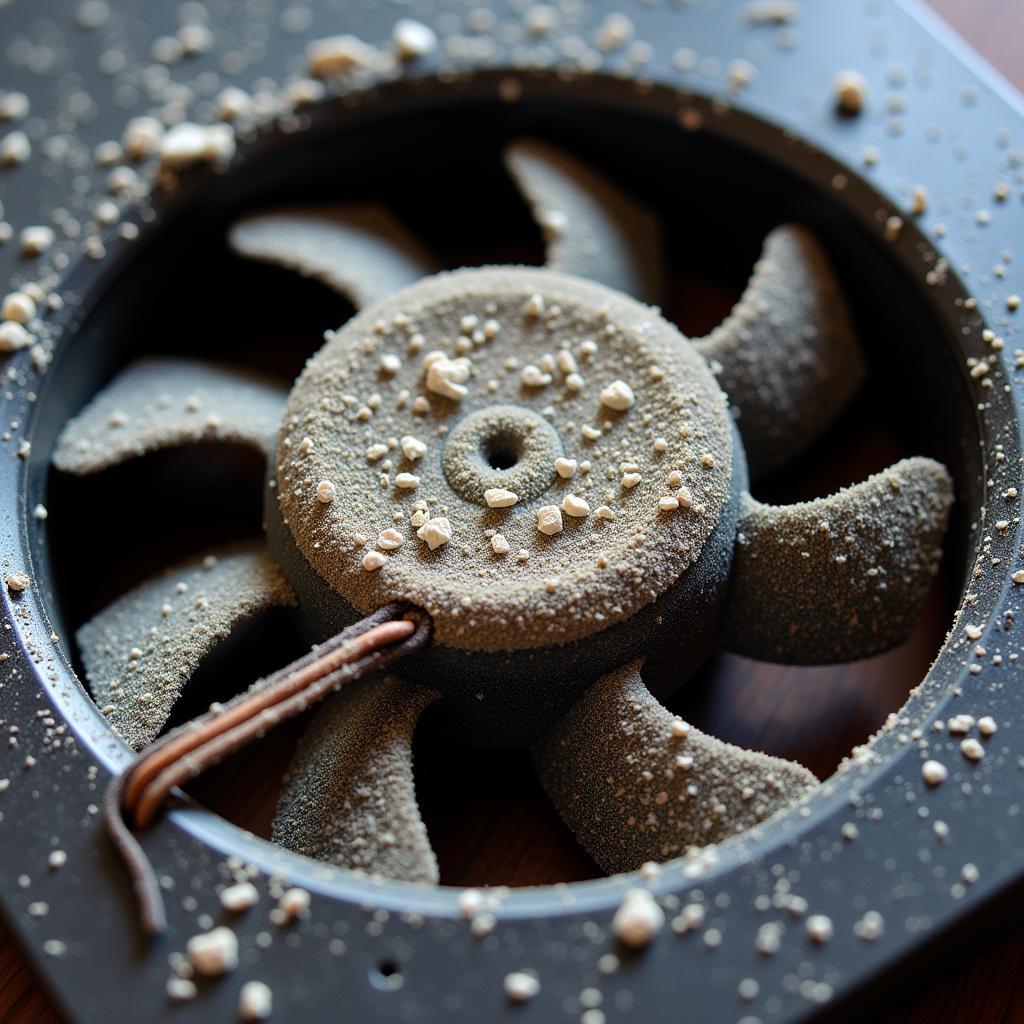“Fan malfunction” – a phrase that strikes fear into the heart of any tech user. But what does it really mean? In simple terms, it signifies a problem with the cooling system of your device, primarily affecting laptops and desktops. This guide delves into the intricacies of fan malfunctions, exploring their causes, symptoms, and potential solutions.
Why is a Functioning Fan Crucial for Your Device?
Imagine your computer as a high-performance engine. Just like an engine needs a cooling system to prevent overheating, your computer relies on fans to regulate its temperature. These fans draw in cool air and expel hot air generated by the processor, graphics card, and other components.
When these fans fail to function optimally, your device becomes susceptible to overheating. This can lead to a myriad of problems, ranging from sluggish performance and random shutdowns to permanent hardware damage.
Common Causes of Fan Malfunction
A fan malfunction isn’t a problem in itself but rather a symptom of an underlying issue. Several factors can contribute to this malfunction, including:
- Dust accumulation: Over time, dust and debris can accumulate on fan blades and within the cooling system, hindering airflow and forcing the fan to work harder.
- Worn-out bearings: Just like any mechanical component, fan bearings can wear out over time, leading to increased friction, noise, and eventual failure.
- Software glitches: Sometimes, software issues related to fan control mechanisms can cause the fan to behave erratically or stop working altogether.
- Physical damage: Accidental drops, impacts, or liquid spills can damage the fan or its connecting cables, rendering it inoperable.
- Overheating: Excessive heat itself can damage fan motors and other cooling system components, creating a vicious cycle of overheating and malfunction.
 Dust Accumulation on a Laptop Fan
Dust Accumulation on a Laptop Fan
Recognizing the Warning Signs: Symptoms of Fan Malfunction
Detecting a fan malfunction early is crucial to prevent further damage. Keep an eye out for these telltale signs:
- Excessive fan noise: A loud whirring, grinding, or clicking sound coming from your device, especially during normal use, could indicate a fan problem.
- Overheating: If your device feels unusually hot to the touch, particularly the bottom or near the fan vents, it’s a strong indication of insufficient cooling.
- Performance issues: Slowdowns, lag, freezes, or unexpected shutdowns, especially during demanding tasks like gaming or video editing, can point to overheating due to fan malfunction.
- Error messages: Some devices display error messages related to fan speed, temperature, or cooling system failures, explicitly indicating a problem.
Troubleshooting Tips: What to Do When Your Fan Malfunctions
If you suspect a fan malfunction, here are some steps you can take to address the issue:
- Clean the fan and vents: Use compressed air to remove dust and debris from the fan blades, heatsink, and surrounding vents. Exercise caution and follow manufacturer guidelines to avoid causing damage.
- Check for software updates: Ensure your operating system and drivers, especially those related to power management and cooling, are up to date. Outdated software can sometimes cause fan control issues.
- Monitor CPU temperature: Utilize system monitoring software to check your CPU temperature. If it consistently exceeds recommended levels, it indicates a cooling problem that needs immediate attention.
- Seek professional help: If the issue persists or you’re uncomfortable opening up your device, it’s best to consult a qualified technician for diagnosis and repair.
 Laptop Cooling Pad with Fans
Laptop Cooling Pad with Fans
Preventing Future Fan Malfunctions
Prevention is always better than cure. Here are some tips to minimize the risk of fan malfunctions:
- Regular cleaning: Make it a habit to clean your device’s fan and vents regularly, especially if you use it in a dusty environment.
- Proper ventilation: Ensure your device has adequate airflow and isn’t placed on surfaces that obstruct ventilation, like beds or carpets.
- Avoid extreme temperatures: Don’t expose your device to extreme temperatures, whether it’s direct sunlight, freezing cold, or high humidity.
- Use a cooling pad: Consider using a laptop cooling pad, especially during resource-intensive activities, to provide additional cooling support.
“Fan Malfunction” – A Call to Action
Don’t ignore the warning signs of a fan malfunction. By understanding the causes, recognizing the symptoms, and taking appropriate measures, you can prolong the lifespan of your device and avoid costly repairs or data loss.
For personalized advice, troubleshooting tips, or assistance with fan-related issues, contact our team of experts at Phone Number: 0903426737, Email: fansbongda@gmail.com Or visit us at: Group 9, Area 6, Gieng Day Ward, Ha Long City, Gieng Day, Ha Long, Quang Ninh, Vietnam. We have a 24/7 customer support team ready to assist you.


